Tesla gains as Musk buys $1 billion in stock; closes well-off highs
Introduction & Market Context
The Trade Desk (NASDAQ:TTD), a leading independent demand-side platform for digital advertising, recently presented its Q2 2025 investor relations slides, highlighting continued growth in a rapidly evolving advertising landscape. The company reported 19% year-over-year revenue growth in Q2 2025 (20% excluding U.S. political election spend), building on its strong performance trajectory over the past decade.
The presentation emphasized TTD’s positioning within the $935 billion global advertising market, with a particular focus on the "open internet" ecosystem outside of walled gardens like search and social media platforms. As digital advertising continues to transform, The Trade Desk positions itself as "the alternative to conflicted platform providers" with an emphasis on objectivity, independence, and transparency.
As shown in the following chart of the advertising market breakdown:
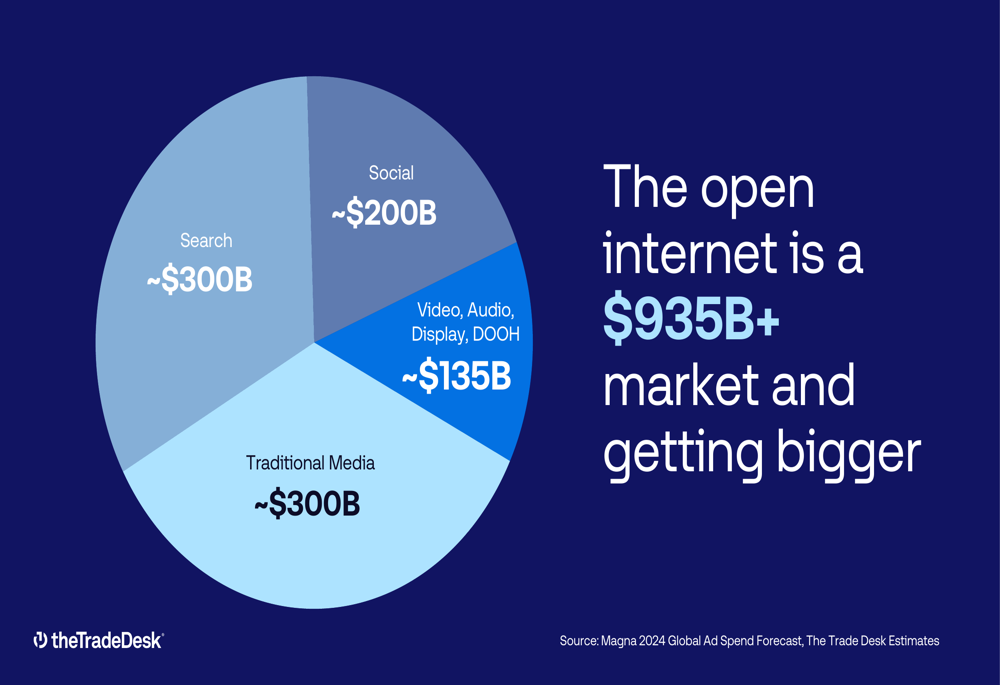
Financial Performance Highlights
The Trade Desk has demonstrated consistent revenue growth, expanding from $114 million in 2015 to $2.445 billion in 2024, representing a 26% year-over-year increase. This growth has been accompanied by strong profitability metrics, with 2024 adjusted net income of $832 million and adjusted EBITDA of $1.011 billion.
The company’s comprehensive financial evolution is illustrated in this overview:
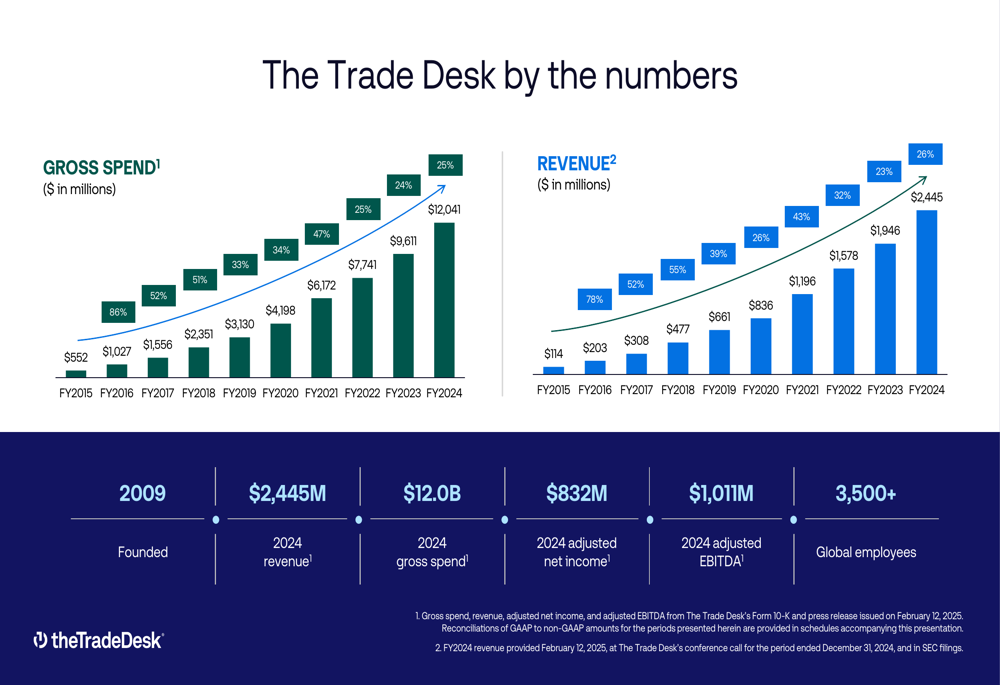
This growth trajectory is further detailed in the company’s revenue chart:
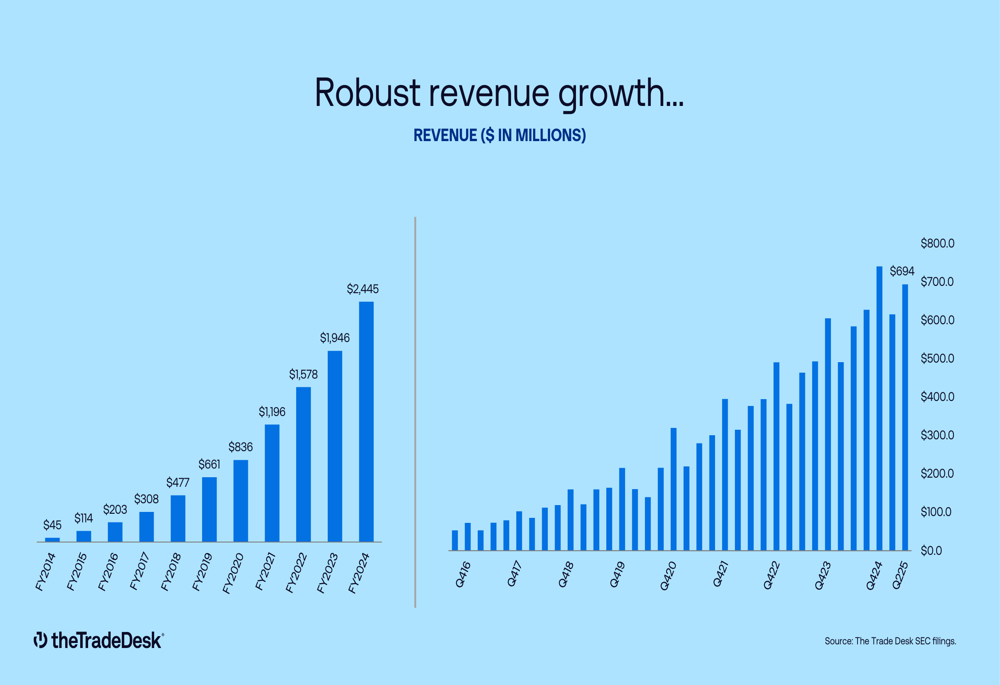
The Trade Desk’s Q1 2025 results, released earlier this year, showed even stronger momentum with revenue reaching $616 million, a 25% increase year-over-year, and earnings per share of $0.33, exceeding analyst expectations of $0.25. However, the stock has experienced significant volatility recently, with premarket trading on August 8, 2025, showing a 28.91% decline.
The company maintains a diversified revenue base across multiple industries, providing resilience against sector-specific downturns:
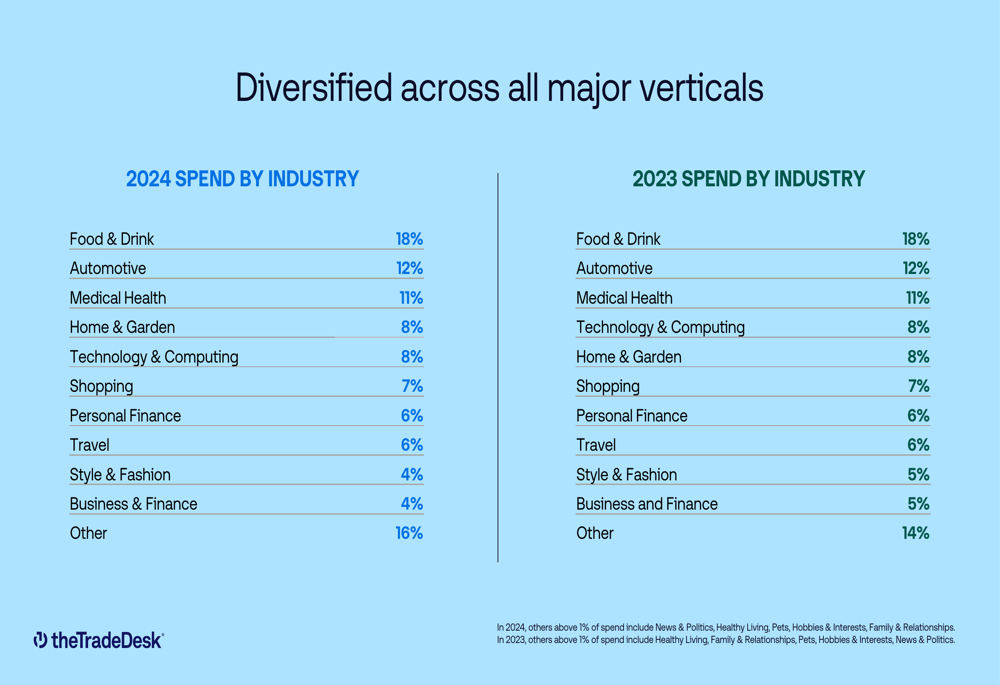
Strategic Initiatives
The Trade Desk identified several key growth drivers in its presentation, with Connected TV (CTV) standing out as its largest and fastest-growing channel. The company highlighted its extensive reach in this segment:
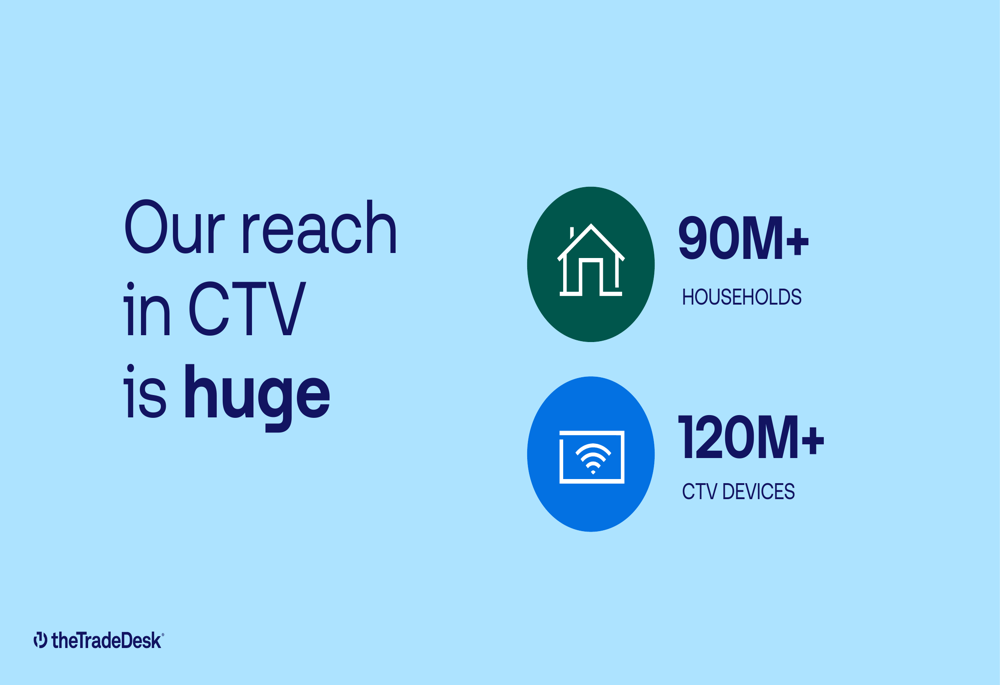
The presentation emphasized how programmatic decisioning improves TV buying efficiency:
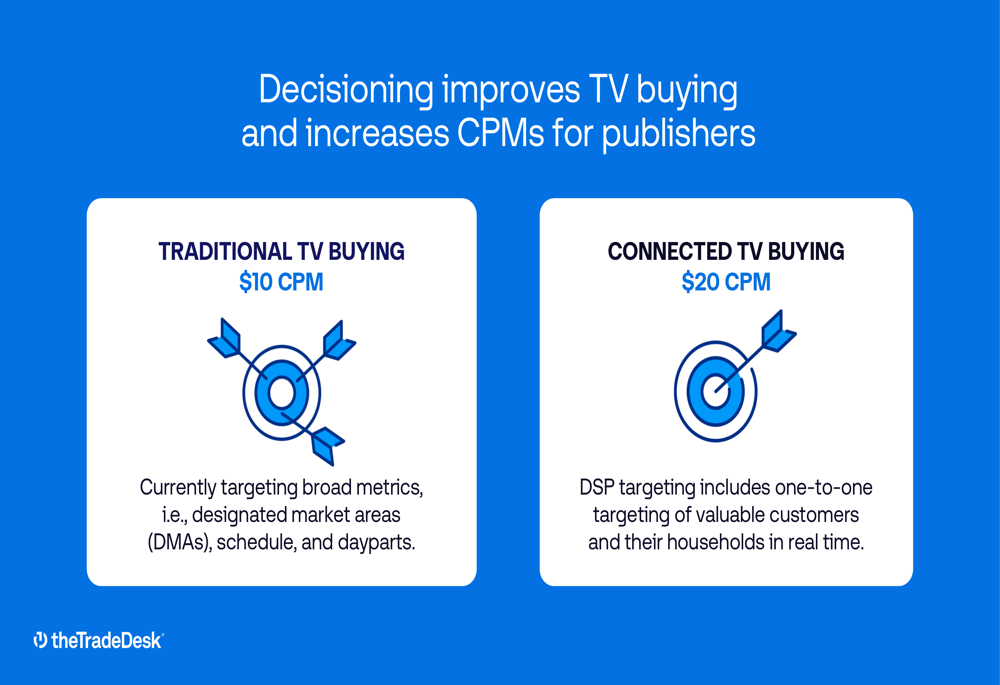
Beyond CTV, The Trade Desk is focusing on several strategic initiatives to drive future growth, including shopper marketing partnerships with major retailers like Home Depot (NYSE:HD) and Instacart (NASDAQ:CART), which provide valuable first-party data for targeting and measurement:
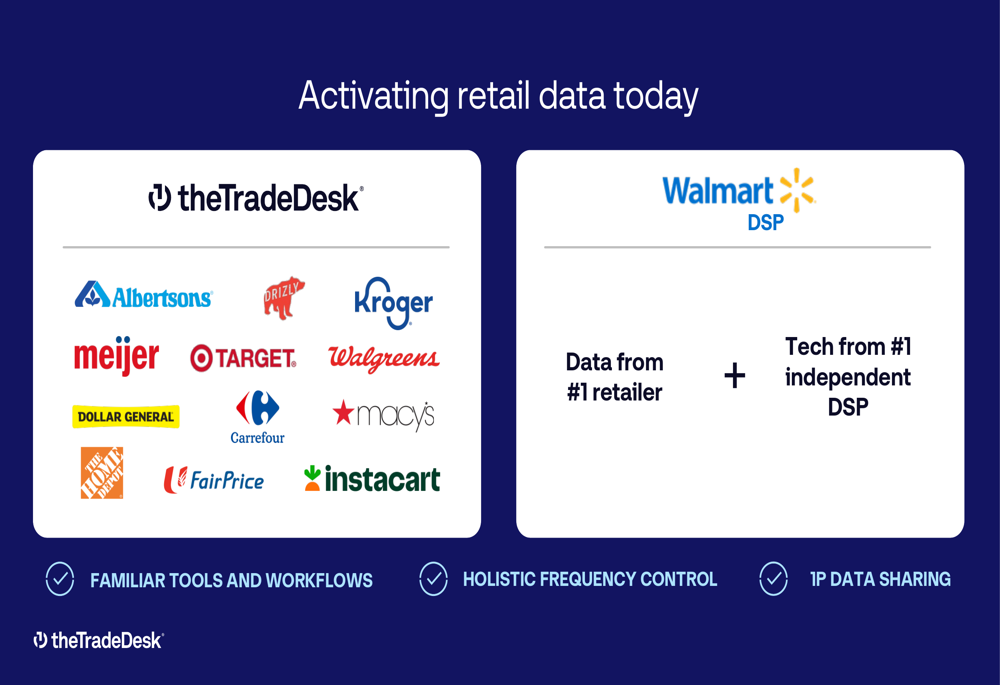
The company’s broader strategic priorities were outlined as follows:

Competitive Industry Position
The Trade Desk emphasized its technological advantages in the presentation, particularly its data management capabilities and reporting granularity. The company’s platform approach enables it to process multiple data inputs to make more intelligent bidding decisions:
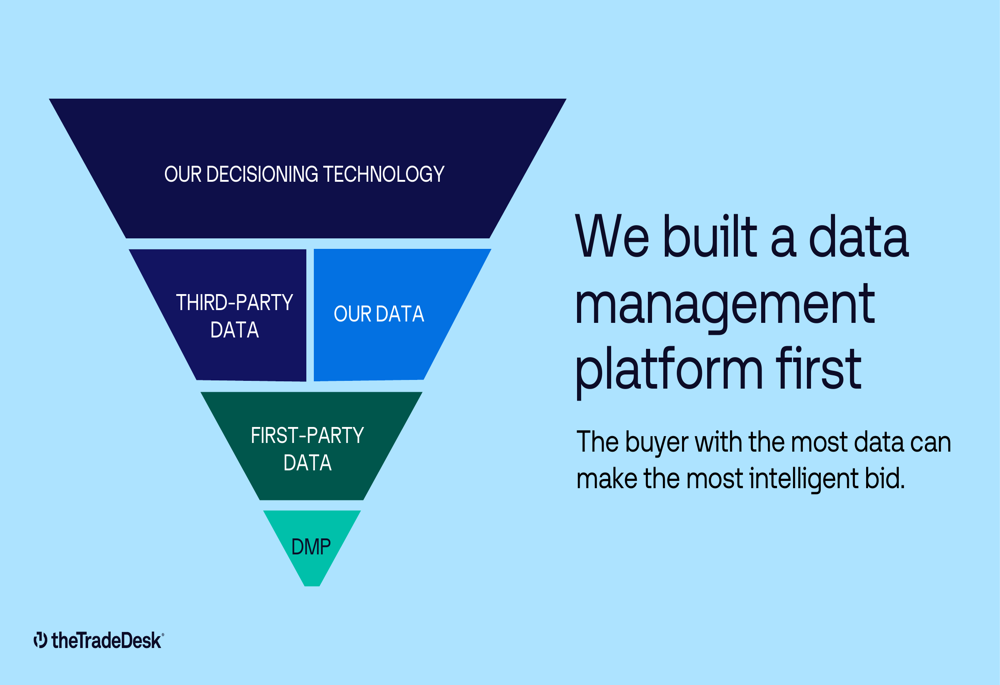
This technological sophistication translates into practical benefits for advertisers, as demonstrated in this case study:
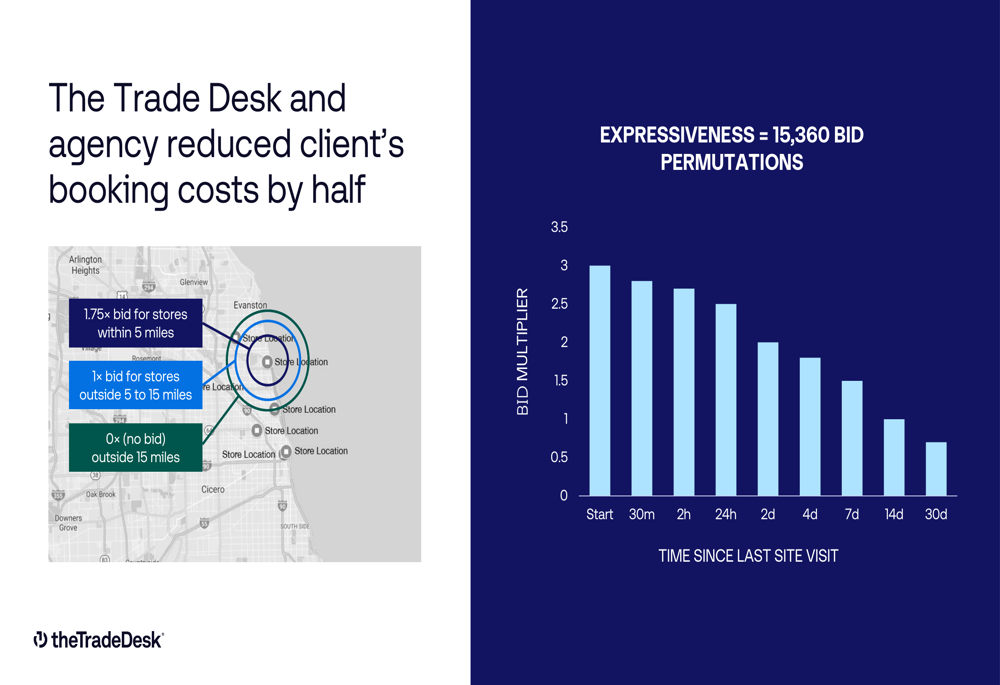
The company’s reporting capabilities provide advertisers with detailed performance insights:
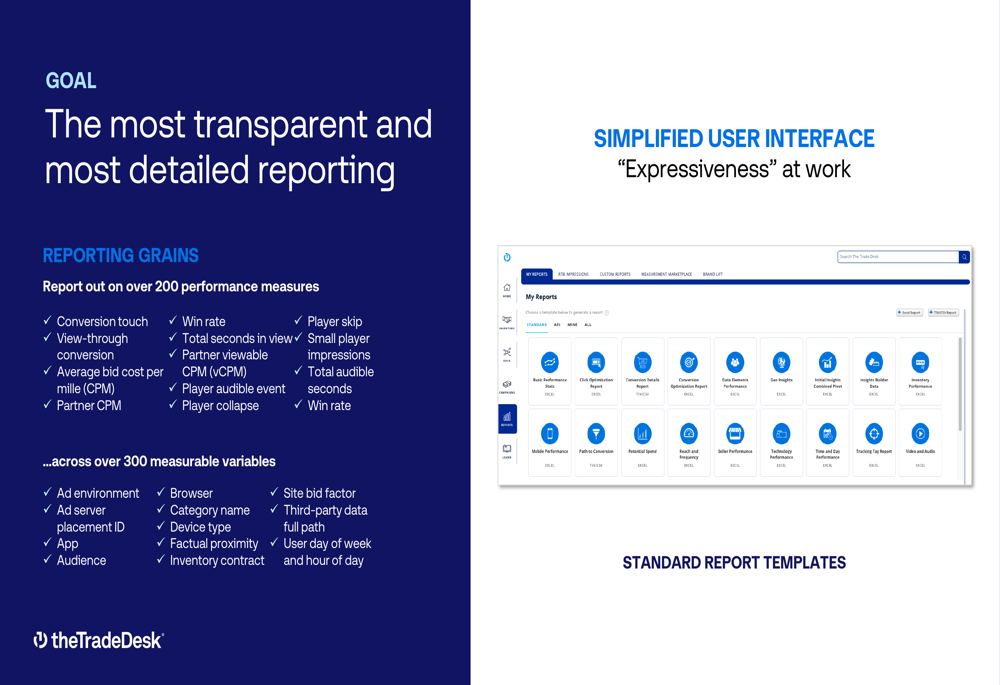
A key differentiator for The Trade Desk is its Unified ID 2.0 initiative, designed to provide identity solutions for the open internet in a privacy-compliant manner. This technology converts email addresses to anonymized IDs and is available to various participants in the advertising ecosystem.
Forward-Looking Statements
The Trade Desk highlighted several investment considerations in its presentation, emphasizing both its recent growth and future opportunities:
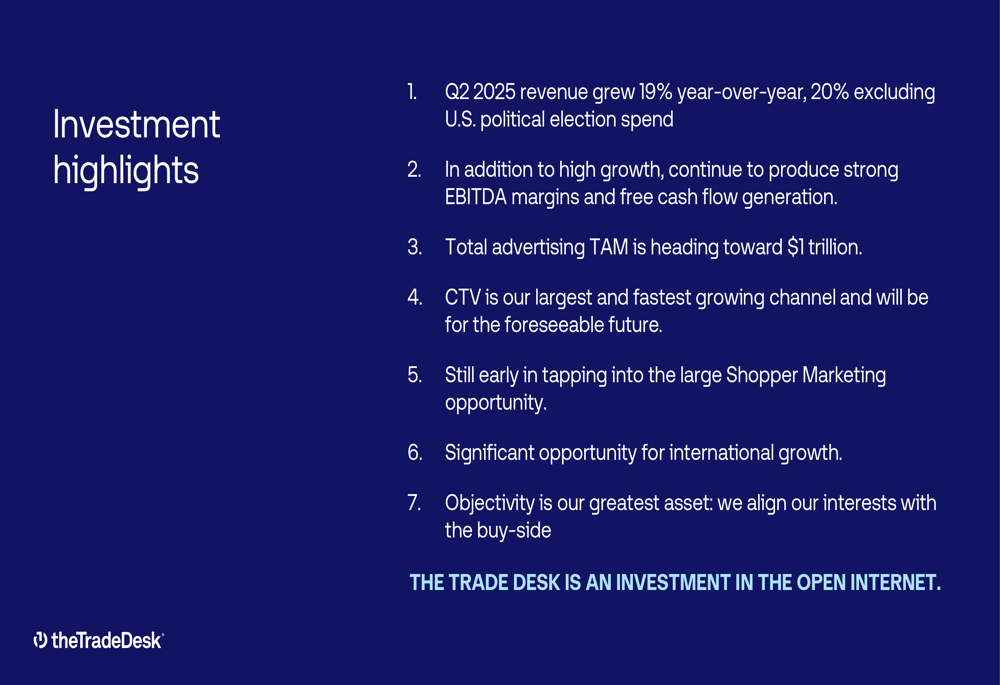
During the company’s Q1 2025 earnings call, CEO Jeff Green expressed optimism about the company’s competitive position, stating, "We were winning in an unfair market. And the market is getting fairer already." CFO Laura Shankine highlighted the company’s independence and objectivity as key differentiators.
Looking ahead, The Trade Desk projects Q2 2025 revenue of $682 million, representing a 17% year-over-year growth. The company plans to continue investing in infrastructure and talent while developing strategic initiatives like OpenPath and DealDesk.
Market Reaction
Despite the company’s positive presentation and strong historical performance, The Trade Desk’s stock has experienced significant volatility. Following the Q1 2025 earnings announcement, the stock surged by 12.64% in after-hours trading, reaching $67.47. However, more recent premarket trading on August 8, 2025, showed a dramatic 28.91% decline to $62.79, suggesting potential concerns about future growth or competitive pressures.
The stock’s 52-week range of $42.96 to $141.53 reflects this volatility, with investors weighing the company’s strong historical performance against challenges in the digital advertising market, including competition from major players like Google (NASDAQ:GOOGL) and Amazon (NASDAQ:AMZN), as well as broader economic uncertainties that could impact advertising budgets.
Despite these challenges, The Trade Desk continues to position itself as "an investment in the open internet," emphasizing its independence, technological advantages, and strategic focus on high-growth areas like Connected TV and shopper marketing as key differentiators in the evolving digital advertising landscape.
Full presentation:
This article was generated with the support of AI and reviewed by an editor. For more information see our T&C.
